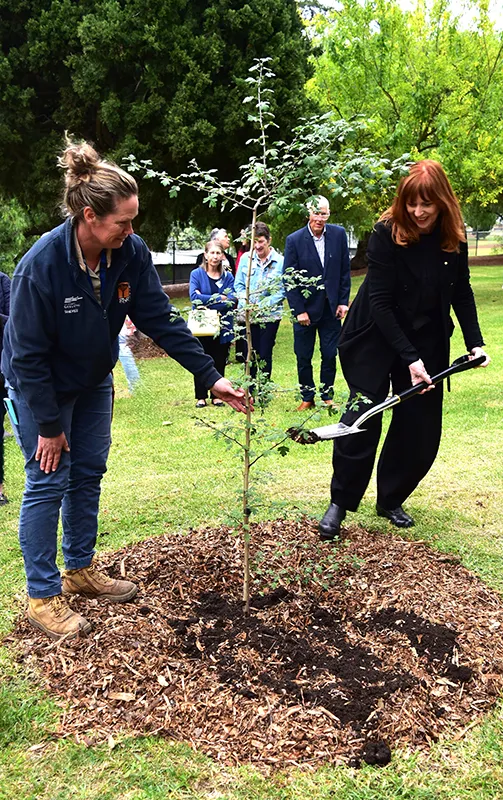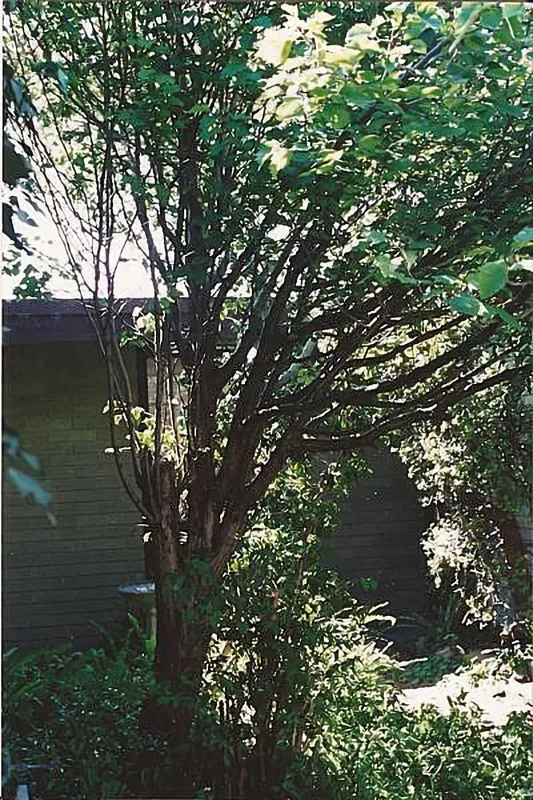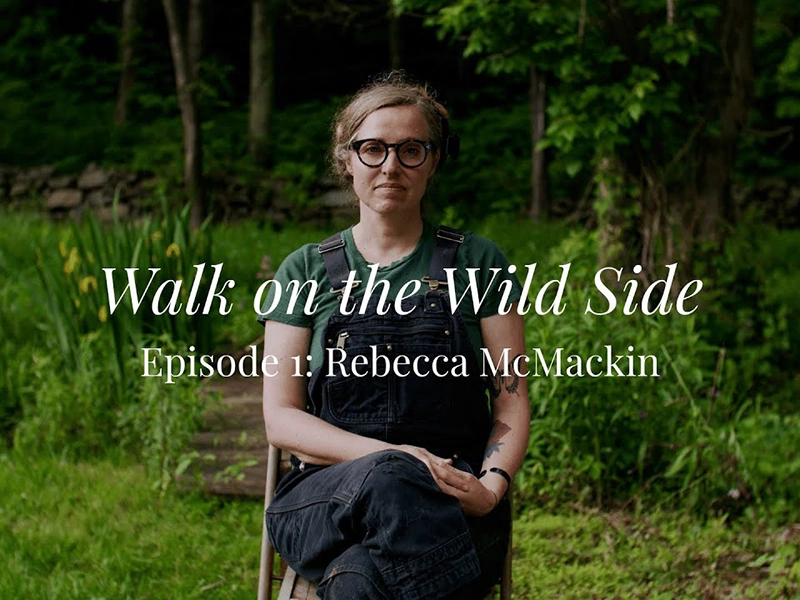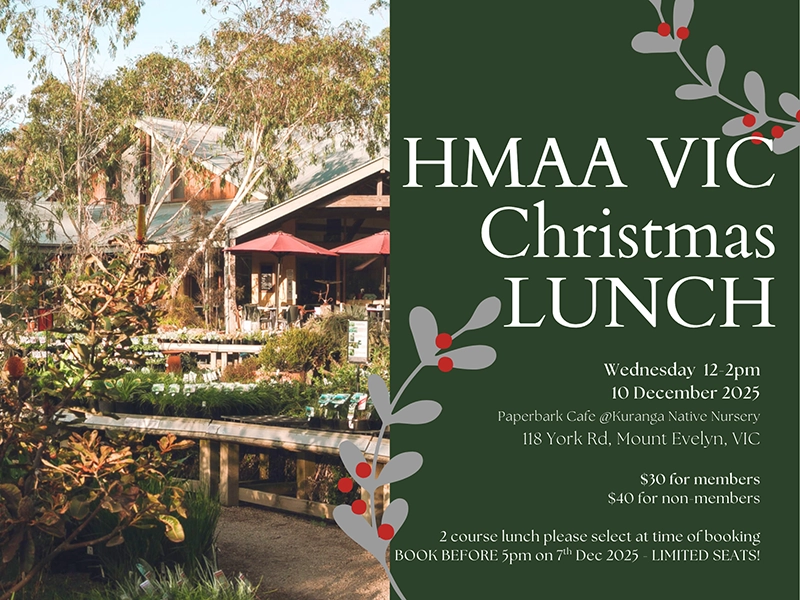When Her Excellency Professor the Honourable Margaret Gardner AC, Governor of Victoria planted a Glastonbury Thorn at the Geelong Botanic Gardens in April 2025 to celebrate the Friends of Geelong Botanic Gardens 40th anniversary, there was a special historical significance in choosing this specific tree.
The Glastonbury Thorn (Crataegus monogyna ‘Biflora’) found in and around Glastonbury, Somerset, England is unique from other hawthorn trees as it flowers twice a year, in winter and the second time in spring.
Settlers James Austin and Thomas Austin were born at Baltonsborough, Somerset, England, the fifth and sixth sons of John Austin. They became Tasmanian colonists and in early 1837 crossed Bass Strait taking up residence at Winchelsea, first known as Austin’s Ford.
Thomas went on the establish Barwon Park there with its impressive mansion, but is probably best remembered for introducing twelve pairs of rabbits to Australia in 1859 that prolifically bred, and rapidly spread! Thomas married Elizabeth Harding, also from Somerset who is also well -known for founding Melbourne’s the Austin Hospital and the Austin Homes in Geelong.
James Austin was Geelong’s second mayor (1851-1851), – and was also four times Mayor of Glastonbury – was also a member of the Geelong Botanic Gardens Committee of Management in 1851. James established his Avalon freehold at Lara on the outskirts of Geelong. Avalon was a familiar name to the area of Arthur and his knights, in which Glastonbury Abbey was established in the 700s. It was rebuilt about 1200 and the Abbey was destroyed in 1539.
In 1856 James Austin retired from his businesses in Australia and returned to his birthplace of Glastonbury in Somerset. In 1862 he acquired the Glastonbury Abbey Estate and ruins and the Abbey House became his home.
Over the centuries the legend of the Glastonbury Thorn surrounds the story of Joseph of Arimathea who begged for Jesus’ body to be put in his own tomb after the crucifixion.
It is said that Joseph travelled to England after the death of Christ to spread the word of Christianity. He carried a staff, and being exhausted stopped close to the Abbey ruins and pressed the staff into the ground. It took root and became the Holy Thorn of Glastonbury.
When James Austin came back to Avalon in 1889, he planted a cutting of the Holy Thorn from Glastonbury at his Avalon property and a second cutting in the grounds of his nephew Sidney’s home, Lunan House at Drumcondra.
When extensions to the Avalon house saw the tree’s removal, cuttings were struck and given to the Geelong Botanic Gardens and Glastonbury Children’s Home, an orphanage in Geelong of which James Austin was one of the founders, and that three generations of the Austin family supported. A branch of the Glastonbury Thorn is on display at the Australian Orphanage Museum linking it to the Glastonbury Children’s Home in Geelong. Another tree was planted at ‘Warrain’ on Geelong’s Western Beach.
A photo of HMAA founding member the late George Jones and Gardens Supervisor Phil Mulroyan holding sprigs of the Glastonbury Thorn at the Geelong Botanic Gardens shows the tree, which is on quite a lean, in the background. Eventually the tree succumbed to a storm, hence the recent new planting at the Gardens.
There was also a Glastonbury Thorn growing on a property at Salt Haven in Belmont and the owner told George Jones her mother-in-law, who was a grand-daughter of James Austin, had visited Glastonbury twice in the 1930s and on one of those occasions brought back a cutting, planting it at Salt Haven close to the front fence where George noticedon October 31st 1999 a secondary branch had pink flowers, all the others being white.
When the property was on the market in 2002 the Realtor, who knew the plant’s significance, had it excluded from the property’s sale at auction in order for it to be transplanted to the gardens.
Gail Thomas










